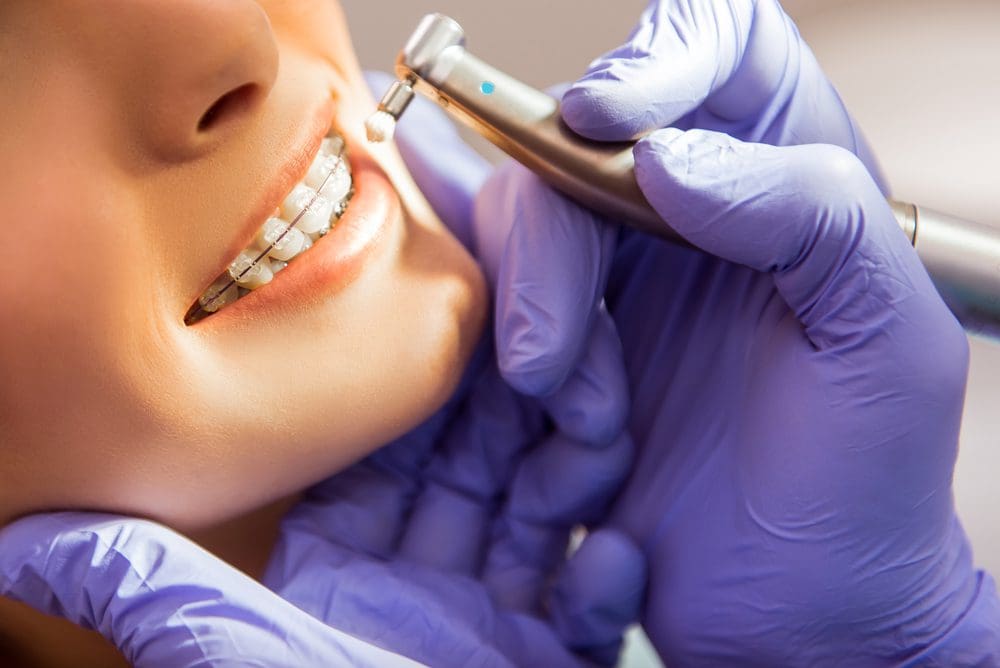Your Guide to Cumming Invisalign: Straightening Teeth with Style and Comfort
Your Guide to Cumming Invisalign: Straightening Teeth with Style and Comfort
Blog Article
Comprehensive Guide to Orthodontics Treatments for Remedying Dental Imbalances
In the world of orthodontics, the journey to achieving a perfectly aligned smile entails a myriad of procedures tailored to fix oral imbalances. From traditional braces to invisible aligners and also surgical options, the field of orthodontics supplies a series of remedies to resolve differing degrees of dental irregularities. Comprehending the details of each procedure, including their devices, benefits, and potential downsides, is crucial in making informed choices concerning one's orthodontic treatment. As we navigate via the comprehensive guide to orthodontic procedures for remedying oral misalignments, the elaborate information of each method will unravel, shedding light on the course toward a practical and unified dental alignment.
Orthodontic Procedures Introduction

Normal changes and tracking are crucial components of orthodontic treatment to make sure development is on track and to make any kind of necessary adjustments along the means. By going through orthodontic treatments, clients can not just attain a straighter smile but also improve their total dental wellness and feature.
Typical Braces: Exactly How They Function
When considering orthodontic treatments for oral imbalances, traditional dental braces stand out as a reliable method for correcting teeth positioning. Conventional dental braces consist of brackets, wires, and bands that function together to apply continual pressure on the teeth, progressively moving them right into the wanted positioning.
One key aspect of exactly how standard dental braces job is the procedure of bone makeover. As stress is related to the teeth via the braces, the bone surrounding the teeth is improved to support the new tooth settings. This makeover is vital for the long-lasting stability of the fixed placement. Patients will require regular modifications at the orthodontist's workplace to ensure the dental braces remain to apply the correct stress for effective teeth movement.
Invisible Aligners: Disadvantages and pros
These clear, tailor-made trays are practically unnoticeable when put on, making them an attractive option for individuals looking for a more aesthetically pleasing orthodontic treatment. Clients can remove the aligners before consuming or brushing their teeth, decreasing the threat of food getting stuck in the home appliance and streamlining the cleansing process.

Surgical Orthodontic Options
Surgical treatments in orthodontics present feasible alternatives for dealing with complicated dental misalignments that might not be efficiently solved with standard orthodontic treatments. While invisible aligners and standard dental braces can remedy lots of orthodontic problems, specific cases require surgical intervention to attain optimum results. Surgical orthodontic choices are generally recommended for severe malocclusions, substantial jaw disparities, and situations where the underlying bone structure needs alteration to accomplish appropriate alignment.
One usual medical orthodontic procedure is orthognathic surgery, which entails repositioning the jaws to correct useful problems such imp source as problem speaking or eating. This surgical procedure is commonly carried out in cooperation with an orthodontist that helps straighten the teeth before and after the treatment. Surgical orthodontics might also entail procedures to reveal affected teeth, remove excess periodontal tissue, or improve the jawbone to produce a more unified facial account.
Before taking into consideration surgical orthodontic alternatives, individuals undergo a detailed evaluation to figure out the necessity and prospective benefits of such interventions. cumming orthodontics. While surgery might appear difficult, it can significantly enhance both the feature and looks of the smile in cases where traditional orthodontic therapies fail
Retainers and Post-Treatment Care

Post-treatment treatment involves complying with the orthodontist's directions faithfully. This may include proper oral health techniques, participating in follow-up appointments, and wearing the retainers as recommended. Failing to abide by post-treatment treatment guidelines can result in relapse, where the teeth gradually move back in the direction of their initial placements. Consistent retainer wear, good oral hygiene, and routine oral examinations are essential for preserving the results accomplished with orthodontic surgical procedure and making certain the long-term stability of the corrected dental alignment.
Conclusion
In final thought, orthodontic treatments provide different choices for fixing dental imbalances. Typical dental braces utilize metal braces and cables to move teeth into correct positioning. Unnoticeable aligners provide an even more very discreet option but may not appropriate for all cases. Surgical orthodontic options are readily available for redirected here a lot get redirected here more serious imbalances. Retainers are frequently used post-treatment to keep the brand-new alignment. On the whole, orthodontic procedures can effectively boost dental wellness and aesthetic look.
As we browse through the detailed guide to orthodontic procedures for dealing with dental misalignments, the detailed details of each approach will unfold, losing light on the course toward a unified and functional oral alignment. - cumming invisalign
One of the most common orthodontic treatments is the usage of dental braces, which consist of metal brackets and cables that use mild pressure to gradually move teeth right into the wanted position.When thinking about orthodontic therapies for oral imbalances, traditional braces stand out as a tried and true technique for remedying teeth placing. In addition, invisible aligners may not be appropriate for complicated orthodontic problems that call for even more substantial teeth activity, as they are typically recommended for mild to moderate cases. Retainers are customized orthodontic gadgets created to hold teeth in their remedied placements after the conclusion of orthodontic therapy.
Report this page